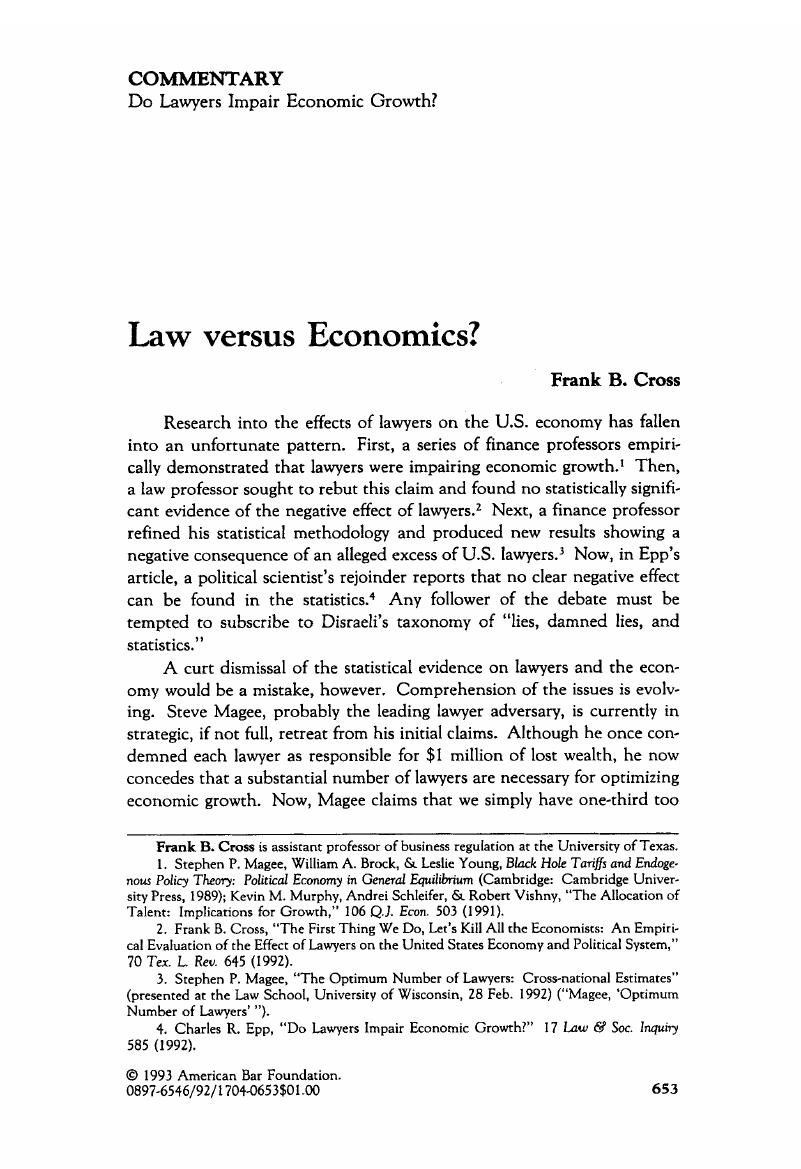Article contents
Law versus Economics?
Published online by Cambridge University Press: 27 December 2018
Abstract

- Type
- Commentary
- Information
- Copyright
- Copyright © American Bar Foundation, 1992
References
1 Magee, Stephen P., Brock, William A., & Leslie Young, Black Hole Tariffs and Endogenous Policy Theory: Political Economy in General Equilibrium (Cambridge: Cambridge University Press, 1989); Murphy, Kevin M., Andrei Schleifer, & Robert Vishny, “The Allocation of Talent: Implications for Growth,” 106 Q.J. Econ. 503 (1991).Google Scholar
2 Cross, Frank B., “The First Thing We Do, Let's Kill All the Economists: An Empirical Evaluation of the Effect of Lawyers on the United States Economy and Political System,”70 Tex. L Rev. 645 (1992).Google Scholar
3 Magee, Stephen P., “The Optimum Number of Lawyers: Cross-national Estimates”(presented at the Law School, University of Wisconsin, 28 Feb. 1992) (“Magee, ‘Optimum Number of Lawyers' “).CrossRefGoogle Scholar
4 Epp, Charles R., “Do Lawyers Impair Economic Growth?” 17 Law & Soc. Inquiry 585 (1992).Google Scholar
5 Magee, “Optimum Number of Lawyers.”Google Scholar
6 Ross Levine & David Renelt, “A Sensitivity Analysis of Cross-country Growth Regressions,” 82 Am Eon. Rev. 942 (1992).Google Scholar
7 B. Peter Pashigian, “The Marker for Lawyers: The Determinants of the Demand for and Supply of Lawyers,” 20 J.L & Econ. 53 (1977).Google Scholar
8 Cross, 70 Tex. L. Rev., at 676–78.Google Scholar
- 1
- Cited by


